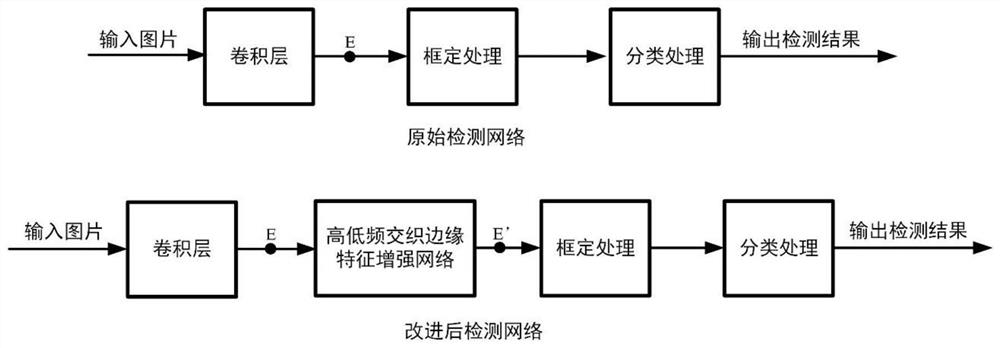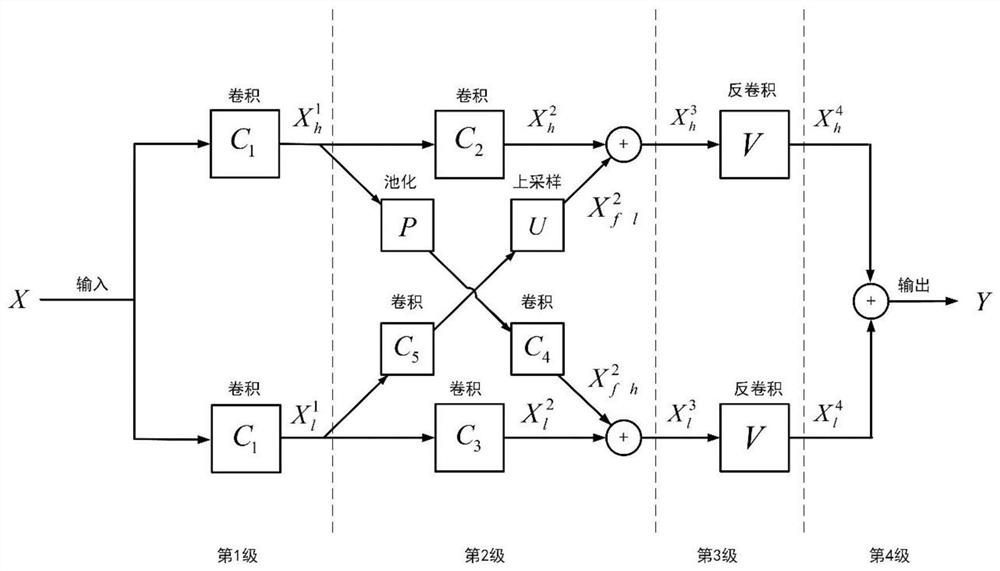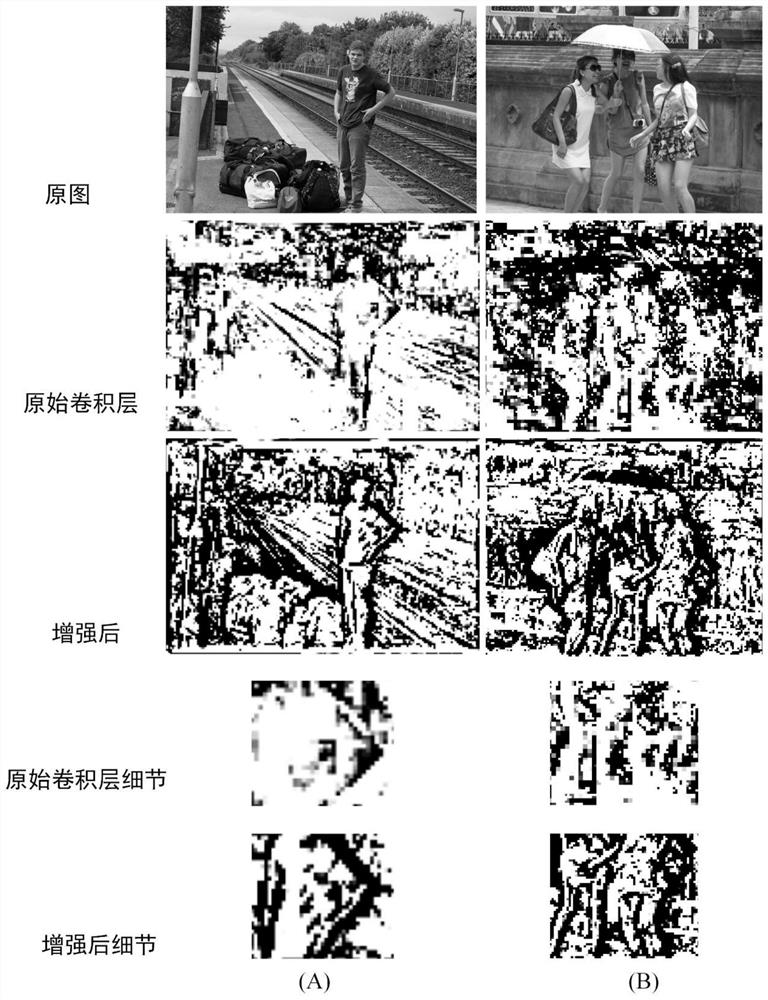High and low frequency interleaved edge feature enhancement method suitable for pedestrian target detection and method for constructing enhancement network
An edge feature and enhanced network technology, applied in the field of deep learning, can solve problems such as ignoring spatial frequency feature information, not having the ability to learn spatial features, and improving detection accuracy
- Summary
- Abstract
- Description
- Claims
- Application Information
AI Technical Summary
Problems solved by technology
Method used
Image
Examples
Embodiment 1
[0113] Effective combination with CornerNet algorithm
[0114] image 3 This is a visual comparison chart of feature enhancement based on the CornerNet network. In the CornerNet network, a high-low frequency interleaved edge feature enhancement network is added, and the feature edge is enhanced through the high and low frequency interleaved edge feature enhancement network, and the appropriate high-frequency feature information is fused and output. The calculation of the heat map in the next step in CornerNet provides good preprocessing. Further improve the detection accuracy, improve the false detection or missed detection of CornerNet, and improve the detection of small targets.
Embodiment 2
[0116] Vehicle Pedestrian Recognition in Traffic Roads
[0117] This example is based on Example 1. Vehicles and pedestrians in road traffic can be effectively classified, and vehicles and pedestrians in road traffic are selected as targets for detection. Figure 4 The detection results of the algorithm before and after adding high and low frequency interleaved edge features to enhance the network are given in . In the construction of intelligent transportation in the future, the target detection of pedestrians and vehicles must be the most important part, and in the test results, it can be seen that pedestrians and vehicles are effectively distinguished, and the high and low frequency interleaving edge feature enhancement network can be applied Vehicle pedestrian recognition in traffic roads.
Embodiment 3
[0119] Vehicle and pedestrian recognition in crowded roads
[0120] This example is based on Example 1. Vehicles and pedestrians in densely populated roads can be effectively classified, and vehicles and pedestrians in the road are selected as targets for detection. Figure 5 The detection results of the algorithm before and after adding high and low frequency interleaved edge features to enhance the network are given in . In dense crowds, this method can effectively detect small distant targets, effectively distinguish pedestrians and vehicles, and correctly detect all targets in the scene.
PUM
 Login to View More
Login to View More Abstract
Description
Claims
Application Information
 Login to View More
Login to View More - R&D
- Intellectual Property
- Life Sciences
- Materials
- Tech Scout
- Unparalleled Data Quality
- Higher Quality Content
- 60% Fewer Hallucinations
Browse by: Latest US Patents, China's latest patents, Technical Efficacy Thesaurus, Application Domain, Technology Topic, Popular Technical Reports.
© 2025 PatSnap. All rights reserved.Legal|Privacy policy|Modern Slavery Act Transparency Statement|Sitemap|About US| Contact US: help@patsnap.com



